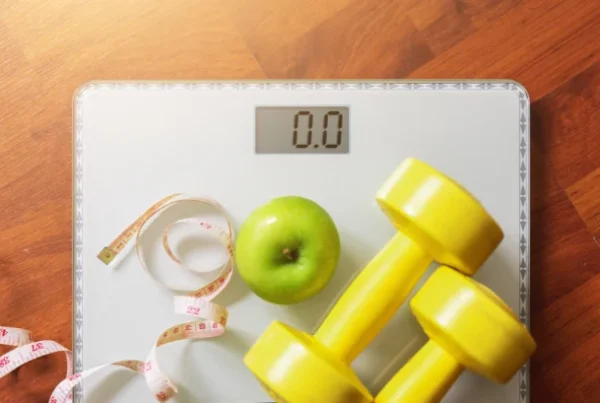The following blog post is for entertainment and informational purposes only. It is not intended to provide medical advice or diagnosis. Please consult your doctor before making any health-related decisions.
Due to its capacity to promote tissue mending and inflammation regulation, and restore gastrointestinal function, the clinical possibilities of BPC-157 have attracted notice. An increased interest in this compound’s medicinal properties comes with the question of the most effective administration methods.
Now, we will assess two major delivery methods – BPC 157 oral vs injection – comparing their benefits and drawbacks of administration procedures during the treatment.
Oral Consumption

Consuming BPC-157 orally entails taking the peptide in a capsule or tablet structure, which enables it to be soaked up through the gastrointestinal tract. This approach brings with it various benefits:
Taking BPC-157 orally presents a hassle-free option without the need to use specialized equipment or medical supervision. Patients are able to take the capsules at home. This minimizes clinic visits and dependence on medical service specialists for assistance.
Comparing BPC 157 oral vs injection, oral ingestion is a minimally intrusive method. It usually elicits no adverse reactions. This makes it appropriate for patients who may feel uneasy about injections or experience apprehension or distress due to needle-associated discomfort.
Comparing the price of BPC 157 oral vs injection, oral compositions are more economical. They do not necessitate specialized fabrication procedures or medical apparatus for dispensation.
However, oral consumption of BPC-157 also has limitations.
The degradation by digestive enzymes and poor absorption through the digestive way provides for this medicine a limited oral bioavailability. This can hinder its therapeutic effectiveness. Only a small portion of the ingested peptide can enter the systemic circulation.
Comparing BPC 157 oral vs injection methods, intake of the medicine orally can result in a slower beginning of action. This medicine needs to go through the digestive system before reaching the blood flow. This medicine can take longer for therapeutic effects to be achieved because of this delayed absorption.
Injection Method

The administration of BPC-157 through injection methods involves the direct delivery of the peptide into the body by subcutaneous, intramuscular, or intravenous routes. This approach provides numerous benefits:
Comparing BPC 157 oral vs injection, the use of injection techniques circumvents the digestive system. An increased bioavailability for BPC-157 is ensured. So, this facilitates faster uptake and greater concentrations of the peptide throughout the organism. This effect can potentially intensify its therapeutic benefits.
Precision dosing and control over BPC-157 administration can be achieved through injection methods. This guarantees reliable delivery of the peptide to targeted tissues. Patients who obtain higher doses or with specific dosage needs stand to gain significant advantages from this approach.
Comparing BPC 157 oral vs injection, the injection methods usually ensure a quicker onset of action by delivering the peptide directly into the blood flow. Treating acute injuries or addressing conditions that call for immediate therapeutic intervention can be more effective.
However, injection methods also have drawbacks.
The use of injection techniques entails the insertion of needles. Discomfort, intimidation, or pain in certain patients can be caused. Comparing BPC 157 oral vs injection, fear of needles, apprehension about experiencing painful sensations, or worry over potential infection hazards can dissuade some people from opting for injections.
Medical supervision is necessary for injection methods to ensure the correct technique and minimize infection, needle-related injuries, or tissue damage.
Storage and handling requirements for injectable BPC-157 formulations, refrigeration, or protection from light are necessary to ensure stability and efficacy. However, this can complicate storage logistics and transportation for medical service specialists or facilities.
Advantages of BPC 157 Oral vs Injection

Non-Invasive Administration
BPC-157 can be taken orally through a simple capsule or tablet. This route presents a non-invasive way. This method of ingestion is preferred by people with a fear of injections or needle phobia, comparing BPC 157 oral vs injection.
Convenience
Oral intake of this medicine in capsules makes this route a convenient and hassle-free addition to one’s daily routine. People opt to take them at home without requiring special equipment or medical supervision. So, this method eliminates regular clinic visits for administering BPC-157.
Accessibility
BPC-157 is easily accessible in oral form without the need for a prescription or healthcare provider supervision. This allows patients to obtain and use it conveniently over the counter at various locations.
Lower Risk of Infection
Comparing BPC 157 oral vs injection, oral consumption eliminates the risk of infections at the injection site. So, this method reassures patients who are anxious about this aspect. In contrast to needle insertion techniques, there is no chance of infection occurring during administration.
Cost-Effectiveness
Comparing BPC 157 oral vs injection, this medicine in oral form is commonly more budget-friendly. This is because it doesn’t entail the utilization of specialized medical equipment or manufacturing processes during administration, ultimately rendering it a cost-efficient choice for patients.
No Pain or Discomfort
The comfort level of patients, especially those sensitive to pain or anxious about injections, is increased when BPC-157 is orally administered since there are no associated discomforts from needle insertion.
Safer for Self-Administration
Comparing BPC 157 oral vs injection, taking this medicine orally poses a lower risk of injuries due to accidental needle pricks or wounds. This feature makes it a safer option for people. This method is preferred by people due to autonomous management of their condition.
Oral consumption of BPC-157 provides numerous benefits compared to injection techniques. These include ease-of-use, non-intrusiveness, affordability, reduced risk of infection, and painless administration – making it the preferred choice for those searching for therapeutic advantages offered by this substance.
What to use – BPC-157 Oral vs Injection Methods?

Several factors determine a decision on whether to use BPC 157 oral vs injection methods for administering this medicine. Individual preferences, medical considerations, therapeutic goals, and practicality can be evaluated.
Patient Preference
To begin, have a conversation with the patient about their preferred BPC 157 oral vs injection methods of administration and level of comfort. Certain patients can favor consuming medication orally if they experience needle phobia or do not like injections, whereas others might prefer injection as a means to administer medicine due to issues involving oral bioavailability or personal concerns.
Clinical Objectives
When contemplating the use of BPC-157 therapy, we need to take into account its distinct therapeutic objectives and indications. Utilizing BPC 157 oral vs injection methods can be more appropriate for particular conditions or treatment targets. For instance, illnesses that require swift tissue repair such as acute injuries would benefit from high bioavailability injections since they have a quicker onset compared to other forms of administration.
Bioavailability and Absorption
Assess the absorption attributes and bioavailability of BPC 157 oral vs injection methods of administration. Although injections usually provide superior bioavailability and quicker absorption than oral intake, efficacy through oral formulations may be affected by individual variations in absorption rates as well as gastrointestinal constituents.
Dosage and Dosing Regimen
To identify the most effective dosage and schedule for treatment, take into account individual patient characteristics as well as desired therapeutic outcomes. Treatment via BPC 157 oral vs injection may necessitate distinct dosages and frequency of administration to achieve comparable benefits. To select an appropriate regimen, factors such as duration of action, half-life, and peak plasma concentration must be considered.
Medical Considerations

Consider any medical factors or contraindications that could impact the selection of BPC 157 oral vs injection administration method. Patients who suffer from bleeding disorders or weakened immune systems may experience greater risks with injection methods, while those experiencing gastrointestinal issues or malabsorption problems might have decreased effectiveness with oral consumption.
Convenience and Adherence
When contemplating the administration method to be used, it is important to weigh in practical aspects such as convenience, adherence, and patient lifestyle factors. Oral consumption may prove advantageous for those who prefer self-administration or have time constraints while injection techniques might necessitate medical supervision or assistance during administration.
Cost and Accessibility
Assessing the expense and availability of BPC-157 formulations in both oral and injectable styles is recommended. Comparing BPC 157 oral vs injection methods, in specific areas, over-the-counter availability may make oral options a more affordable choice; however, obtaining prescriptions for injections can be costlier due to production expenses and administration requirements.
Risk-Benefit Profile

Evaluate the risk and benefit balance of BPC 157 oral vs injection administration method, taking into account the possible advantages of treatment compared to the dangers posed by adverse reactions or complications. Pain, discomfort, vulnerability to infection, and likelihood of systemic side effects should all be taken into consideration when deciding between BPC 157 oral vs injection approaches.
To arrive at a suitable method of administering BPC-157, it is important to evaluate several factors such as the patient’s unique characteristics, desired outcomes from therapy, medical restrictions, and practical concerns in terms of benefits over harms. Work together with both healthcare professionals and patients to establish an individualized treatment plan that maximizes advantages while minimizing risks for complete satisfaction and compliance.
Administration of this medicine can be done through BPC 157 oral vs injection methods, each with its distinct benefits and drawbacks. Oral consumption is easy to use, non-intrusive, and cost-effective but may have a decreased bioavailability rate compared to injections leading to a slow onset of action. On the other hand, injections require medical supervision due to needle insertion issues.
The decision between BPC 157 oral vs injection administration routes is influenced by several factors, including the patient’s preference, therapeutic objectives, necessary dosages, efficacy, and comfort levels.
Health professionals must weigh the advantages and disadvantages of both approaches to work with patients in creating customized treatment plans that maximize BPC-157 therapy for better outcomes and compliance. Additional research is essential to investigate innovative methods of administering BPC-157 that improve its effectiveness, safety, and convenience.




